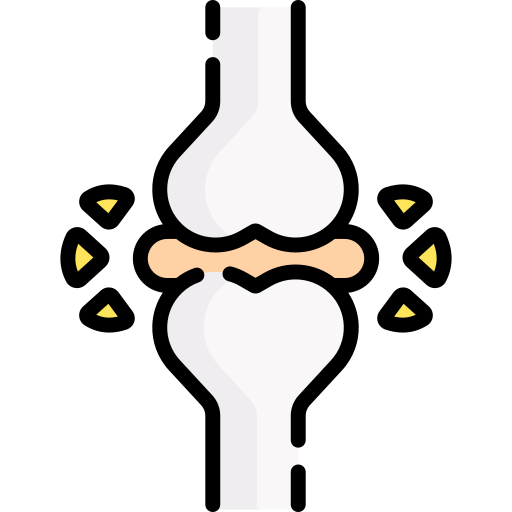Knee Pain
Knee pain is a common complaint that can affect people of all ages. It can be caused by a variety of factors, including injury, overuse, or underlying medical conditions. Symptoms can include pain, swelling, stiffness, and difficulty moving the knee joint. Physiotherapy can help manage knee pain through a combination of exercises that strengthen the surrounding muscles, improve range of motion, and reduce inflammation. Treatment may also include manual therapy, education on activity modification, and the use of modalities such as heat or ice. A comprehensive approach to knee pain management can help prevent further injury and improve overall function.
Frozen Shoulder
Frozen shoulder, or adhesive capsulitis, is a condition that causes pain and stiffness in the shoulder. Physiotherapy can help to relieve the pain and stiffness associated with a frozen shoulder. A physiotherapist will assess your condition and develop a treatment plan that may include a range of motion exercises, strengthening exercises, manual therapy, heat therapy, ice therapy, and ultrasound therapy. In most cases, physiotherapy can help to relieve the pain and stiffness associated with a frozen shoulder. However, if the condition is severe or does not respond to treatment, surgery may be necessary.
Tennis Elbow
Tennis elbow, or lateral epicondylitis, is a condition that causes pain on the outside of the elbow. It is caused by overuse of the forearm muscles that extend the wrist and fingers. Physiotherapy can help to relieve the pain and inflammation associated with tennis elbow. A physiotherapist will assess your condition and develop a treatment plan that may include stretching and strengthening exercises, ice therapy, ultrasound therapy, electrical stimulation, and taping. In most cases, physiotherapy can help to relieve the pain and inflammation associated with tennis elbow. However, if the condition is severe or does not respond to treatment, surgery may be necessary.
Plantar fasciitis
Plantar fasciitis is a common condition that causes pain in the heel and bottom of the foot. It is caused by inflammation of the plantar fascia, a thick band of tissue that connects the heel bone to the toes. Symptoms include pain, stiffness, and difficulty walking or standing for long periods of time. Physiotherapy can help manage plantar fasciitis through a combination of exercises that stretch and strengthen the affected muscles and improve foot mechanics. Treatment may also include manual therapy, education on activity modification, and the use of modalities such as ultrasound or taping. Early intervention is important to prevent long-term complications and improve overall function.
Ankle sprain
Ankle sprains are a common injury that can result from twisting or turning the ankle in an awkward way. Symptoms include pain, swelling, and difficulty bearing weight on the affected ankle. Physiotherapy can help manage ankle sprains through a combination of exercises that strengthen the surrounding muscles and improve range of motion. Treatment may also include manual therapy, education on activity modification, and the use of modalities such as ice or heat. Early intervention is important to prevent long-term complications such as chronic instability or arthritis. A comprehensive approach to ankle sprain management can help speed up recovery and improve overall function

Muscle spasm/sprain
Muscle spasms and sprains are common injuries that can cause pain, swelling, and limited mobility. Muscle spasms occur when the muscle contracts involuntarily, while sprains involve the stretching or tearing of ligaments that connect bones to each other. Physiotherapy can help manage muscle spasms and sprains through a combination of exercises that promote healing, improve strength and flexibility, and reduce inflammation. Treatment may also include manual therapy, education on activity modification, and the use of modalities such as heat or ice. Early therapy, education on activity modification, and the use of modalities such as heat or ice. Early intervention is important to prevent further injury and promote a faster recovery. A comprehensive approach to muscle spasm and sprain management can help improve overall function and reduce the risk of recurrence.
Carpal tunnel syndrome
Carpal Tunnel Syndrome (CTS) is a common condition that affects the hand and wrist. It occurs when the median nerve, which runs through the carpal tunnel in the wrist, becomes compressed or irritated. This can result in symptoms such as pain, numbness, and tingling in the hand and fingers, weakness in the grip, and difficulty performing fine motor tasks. Physiotherapy can be an effective treatment for CTS, focusing on exercises to strengthen the muscles in the wrist and hand, stretching to relieve pressure on the median nerve, and ergonomic modifications to prevent further irritation. In some cases, splinting or surgery may also be necessary.
Rheumatoid Arthritis
Rheumatoid arthritis is a chronic autoimmune disorder that causes joint inflammation, pain, and stiffness. It can affect multiple joints, including the hands, wrists, and knees. Physiotherapy can help manage rheumatoid arthritis through a combination of exercises that improve joint mobility, strength, and endurance. Treatment may also include manual therapy, education on activity modification, and the use of modalities such as heat or ice. Early intervention is important to prevent joint deformities and maintain overall function. A comprehensive approach to rheumatoid arthritis management, including medication and lifestyle modifications, can help improve quality of life and reduce the risk of long-term complications.
Osteoarthritis
Osteoarthritis is a common condition that affects the joints, particularly in the knees, hips, and hands. It is characterized by the breakdown of cartilage, causing pain, stiffness, and reduced mobility. Physiotherapy can help manage osteoarthritis through a combination of exercises that improve joint mobility, strengthen the surrounding muscles, and reduce inflammation. Treatment may also include manual therapy, education on activity modification, and the use of assistive devices such as braces or orthotics. Early intervention is important to slow the progression of the condition and improve overall function. A comprehensive approach to osteoarthritis management can help improve quality of life and reduce the need for medication or surgery.

